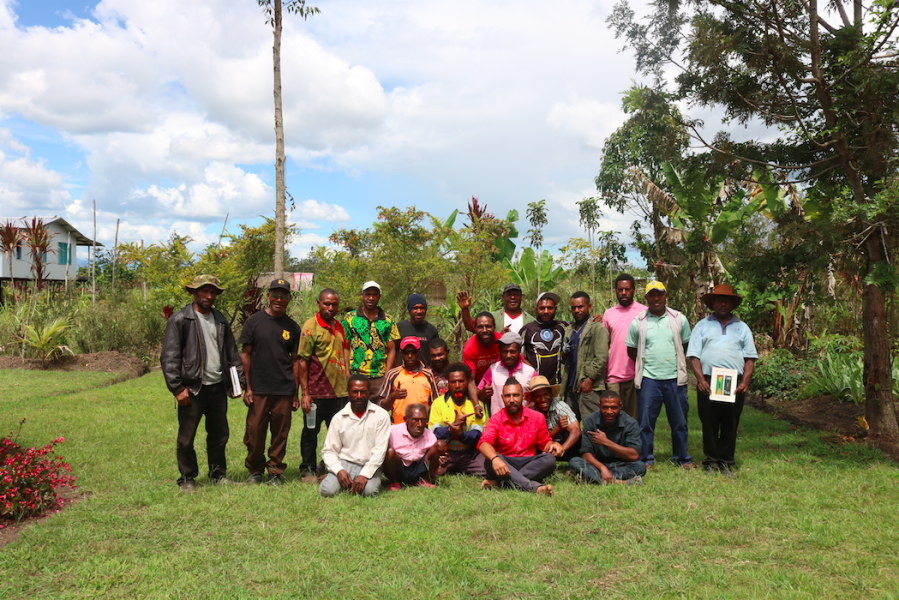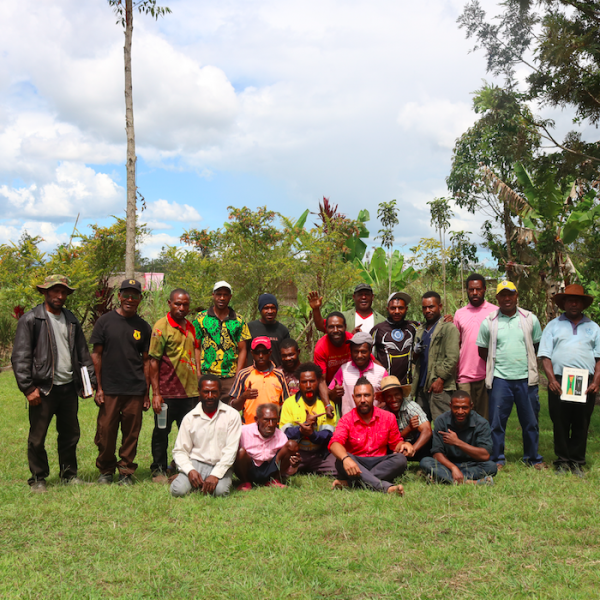Home Participants 22nd Biennale of Sydney (2020) Eric Bridgeman and Haus Yuriyal
Eric Bridgeman and Haus Yuriyal


Eric Bridgeman and Haus Yuriyal
Born 1986 in Redcliffe, Queensland Lives and works in Brisbane, Australia and Wahgi Valley, Jiwaka Province, Papua New Guinea

At Cockatoo Island Eric Bridgeman and Haus Yuriyal – which includes 25 current members of different ages and cultural backgrounds from Simbu, Jiwaka and Southern Highlands Provinces in Papua New Guinea – present two houses, each encompassing many diverse projects, including film, photography, painting and bilum weaving, and acting as places for different forms of gathering. Eri Ari Iki refers to a protected and sacred dwelling, a ‘safe house’, and is lined with kuman (shield) designs that signal the presence of group members back in PNG and act as protection for activities occurring inside. A custom Haus Piksa (picture house), is a place for diverse audio-visual works and screenings. SUNA (Middle Ground) encompasses many collaborations including with a newly established women’s weaving group led by Veronica Gikope, and with local music and video producer Elizah Kippex (Kippex Productions), Jaycee Daniel (JD Productions), and Sil Bolkin (Galkope Audio Lab). This project is an ongoing relational and creative process – a bringing together of diverse forms of creative expression and collaboration, forming its own network of ideas and evolving community on the island, reflecting on the nature of the house as a culturally enriching, creative, shared space. At the Museum of Contemporary Art Australia, Eric Bridgeman presents rot bung. In Melanesian Pidgin English, rot bung literally describes an intersection, junction, or fork in the road. To stap long (be at) rot bung indicates a personal turning point, to be in crisis or in a moment of critical impact. The text applied over this wall painting and adjacent to Frederick McCubbin’s 1855 painting A Bush Burial – a representation of Australian colonial settler subjects – is a loose translation of lyrics by British songwriter PJ Harvey. These have been translated into Pidgin English and relate to a personal story of the artist’s late cousin and poroman (friend), Awari. Using language and anecdotal references to memorialise great personal loss during times of war and conflict, the text is an intimate conversation between Bridgeman and McCubbin. Eric Bridgeman is a multi-disciplinary artist based in Australia and Papua New Guinea (PNG). The dominant focus of his photographic work involves the discussion of social-cultural issues and often involves the depiction of solitary figures set among a particular cultural domain. More recently, Bridgeman has developed a series of collaborative projects which are carried out with and among his people in PNG’s Chimbu province. These projects focus on the crafting and design of traditional shields from his family’s region in a bid to preserve cultural practices among his people. Commissioned by the Biennale of Sydney with generous support from Arts Queensland and the Australia Council for the Arts. Courtesy the artist; Milani Gallery, Brisbane; and Gallerysmith, Melbourne.
“Suna is a word in Yuri language used to describe a middle ground, a safe and central location in a village ideal for gathering, and distant enough from potential conflicts at the borders. My home in the Wahgi Valley of Papua New Guinea was built in 2015, quickly becoming a meeting point for relatives, extended family from the Yuri Alaiku tribe of South Simbu, and local papa graun (custodial land owners). The round house became a site of exchange, organisation and learning for generations of men (a hausman or men’s house) to help enrich our lives through artistic practice and traditional knowledge, while encouraging self-development and community participation.”